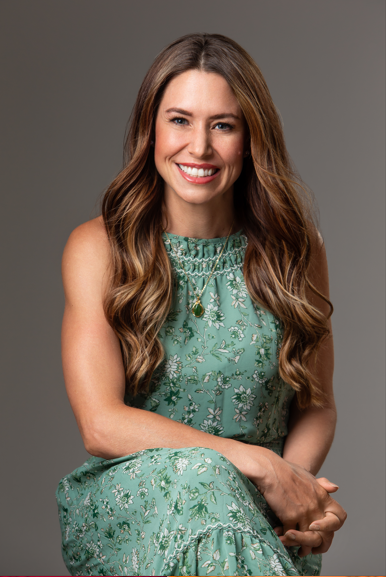
Sarah had always been close to her mother, Eleanor. Though Eleanor had a tumultuous relationship with a man named “Mark” for several years, Sarah never imagined he would become her sole caregiver. After Eleanor suffered a debilitating stroke, Mark stepped in, insisting he was best equipped to handle her care.
Initially, Sarah was relieved that her mother wasn’t alone. However, her relief quickly turned to unease. Mark began to restrict family visits, claiming Eleanor was “too fragile” and that visitors “overstimulated” her. Sarah noticed changes in her mother that alarmed her. Eleanor’s nails were long and dirty, and she often had an unpleasant odor, suggesting a lack of basic hygiene.
“Something just isn’t right,” Sarah confided to her sister. “Mom always took pride in her appearance. Now, she looks neglected. Mark won’t let us see her alone, and he always seems agitated when we question her care.”
During brief, supervised visits, Sarah observed that Eleanor appeared withdrawn and fearful. She seemed hesitant to speak freely, often glancing at Mark before answering simple questions. Sarah also noticed that Mark seemed to be driving a newer, more expensive vehicle than he used to, and that he was making comments about Eleanor needing “expensive medical equipment”.
One day, while dropping off groceries, Sarah overheard Mark on the phone, arguing loudly about “needing more money” and “her assets.” This raised serious concerns about Mark’s motivations. Sarah also discovered that recent withdrawals had been made from Eleanor’s bank account, and that Mark had recently been added as an authorized user, which Eleanor had never mentioned.
Sarah’s growing fear was compounded by Mark’s increasingly hostile demeanor. He became defensive and accusatory, insisting that Sarah and her siblings were “interfering” and “trying to take Eleanor away.” He even threatened to call the police if they continued to visit.
Sarah’s concerns included:
- Physical Neglect: Eleanor’s poor hygiene and unkempt appearance suggested a lack of basic care.
- Social Isolation: Mark’s restriction of family visits isolated Eleanor from her support system.
- Financial Exploitation: The unexplained bank withdrawals and Mark’s comments about Eleanor’s assets raised red flags.
- Emotional Manipulation: Eleanor’s withdrawn behavior and fear suggested she was being emotionally manipulated or intimidated.
- Sudden change in care giver: The sudden change in main care giver when the person has a history of on and off relationships with the victim.
Sarah knew she had to act. She documented every instance of neglect and suspicious behavior and contacted the local Adult Protective Services. She also consulted with a lawyer specializing in elder law to discuss her options for protecting her mother.
This scenario highlights several key aspects of elder abuse:
- The abuser often isolates the victim from their support network.
- Physical neglect can be a sign of deeper abuse.
- Financial exploitation often goes hand-in-hand with other forms of abuse.
- The victim may be afraid to speak out due to fear or manipulation.
- A sudden change in care giver, especially involving a person with a questionable relationship with the victim, is a major red flag.
This example illustrates the importance of trusting your instincts and taking action when you suspect elder abuse.
Elder financial abuse is a heartbreaking reality, often hidden in plain sight. It’s a betrayal of trust that can leave our most vulnerable seniors emotionally and financially devastated. As a community, we must be vigilant and proactive in protecting our elders from those who seek to exploit them.
What is Elder Financial Abuse?
Elder financial abuse occurs when someone illegally or improperly uses an older adult’s money, property, or assets. It can take many forms, and often the perpetrator is someone the senior trusts – a family member, friend, or caregiver.
Examples of Elder Financial Abuse:
- Unauthorized Use of Funds: A family member uses the senior’s debit card without permission, or writes cheques from their account.
- Forced Financial Decisions: A caregiver pressures a senior to change their will or power of attorney.
- Fraudulent Schemes: Seniors are targeted by scams, such as lottery scams, investment fraud, or home repair scams.
- Theft of Assets: Personal belongings, jewelry, or even the senior’s home are stolen.
- Misuse of Power of Attorney: Someone with power of attorney uses the senior’s assets for their own benefit, not for the senior’s well-being.
- Isolation and Control: A perpetrator isolates the senior from family and friends, making them dependent and easier to manipulate.
- Failure to Pay for Care: A person responsible for paying for the elders care, fails to do so.
- Sweetheart Scams: A person forms a romantic relationship with a senior only to steal their money.
Recognizing the Signs:
It’s crucial to be aware of the signs of elder financial abuse:
- Sudden changes in the senior’s financial situation.
- Unexplained withdrawals or transfers from bank accounts.
- Missing belongings or valuable items.
- Unpaid bills or eviction notices.
- The senior appearing fearful, anxious, or withdrawn.
- Isolation from family and friends.
- The senior mentioning new “friends” that seem to be overly interested in their finances.
What to Do If You Suspect Elder Financial Abuse:
If you suspect someone is exploiting an older adult, take action immediately. Here are some key resources in Canada:
- Report to the Police: If you believe a crime has occurred, contact your local police or the RCMP. In emergencies, call 911. For non-emergencies in Calgary, the number is 403-266-1234.
- Contact Adult Protective Services (or equivalent): Every province and territory has agencies that investigate abuse, neglect, and exploitation of vulnerable adults. Search online for “adult protective services [your province/territory]” to find the local agency.
- Reach Out to Elder Abuse Support Organizations:
- The Canadian Network for the Prevention of Elder Abuse (CNPEA): cnpea.ca
- The Advocacy Centre for the Elderly (ACE) (Ontario): 1-855-598-2656, advocacycentreelderly.org
- Carya Calgary (Calgary): 403-705-3250 (Elder Abuse Resource Line), caryacalgary.ca
- Kerby Centre (Calgary): 403-265-0661, kerbycentre.com
- Sage Seniors Safe House (Edmonton): 780-454-8888 (24-hour helpline), mysage.ca
- Alberta Elder Abuse Awareness Council: Search online to find their most up to date contact information.
- Contact the Public Guardian and Trustee (or equivalent): In Alberta, 1-877-427-4525.
- Inform Financial Institutions: Alert the senior’s bank or credit union about suspected abuse.
- Canadian Anti-Fraud Centre: 1-888-654-9426, or online at antifraudcentre.ca.
Prevention is Key:
- Stay Connected: Maintain regular contact with older loved ones.
- Educate Seniors: Help them understand common scams and how to protect themselves.
- Encourage Open Communication: Create a safe space for seniors to discuss their finances.
- Seek Legal Advice: Consider consulting an elder law lawyer for advice on powers of attorney and estate planning.
- Monitor Financial Transactions: If you are a trusted family member, keep an eye on unusual financial activity, with the consent of the elder.
Protecting our seniors is a shared responsibility. By recognizing the signs of elder financial abuse and taking action, we can make a difference. Please share this information to help raise awareness and protect our vulnerable elders.

